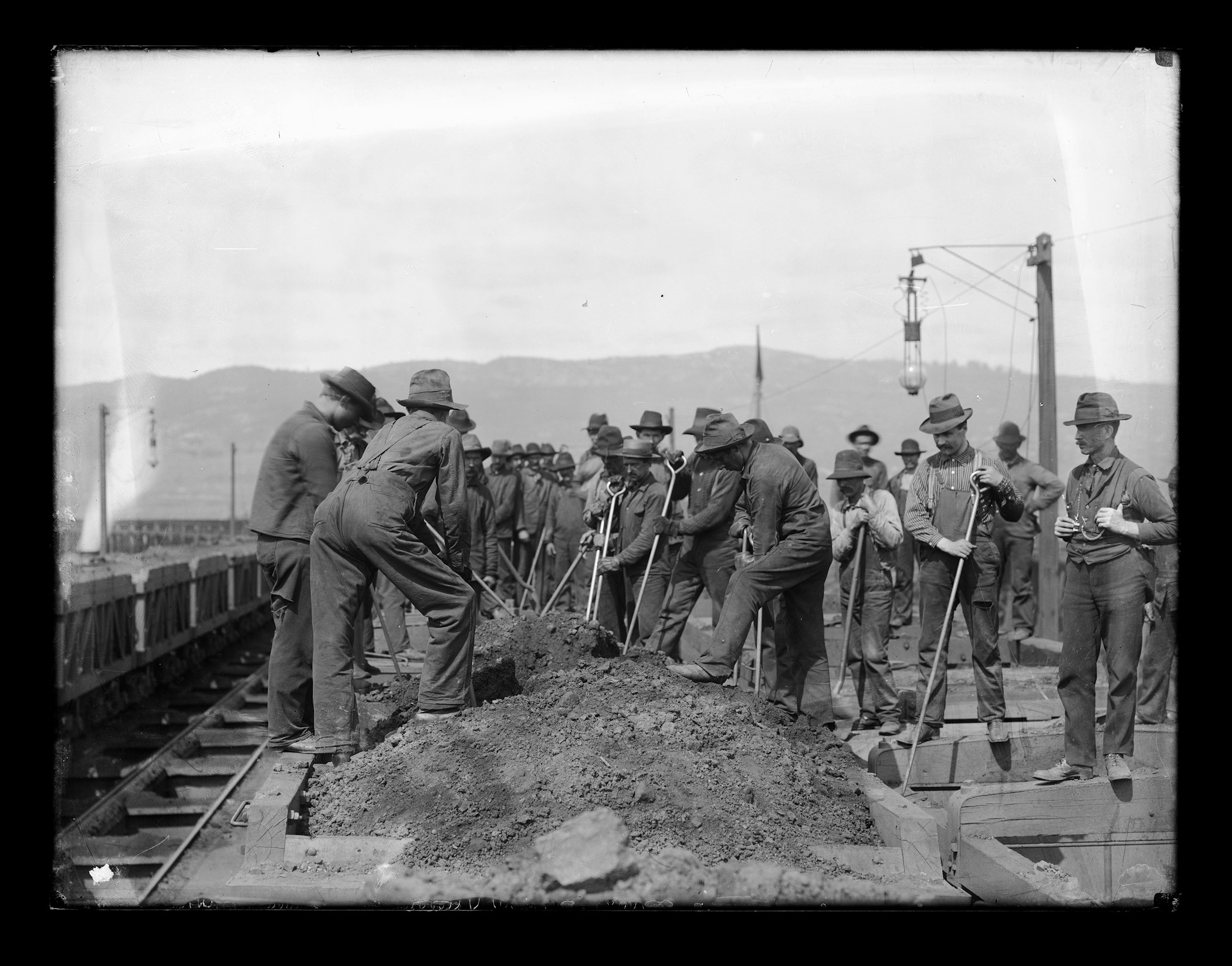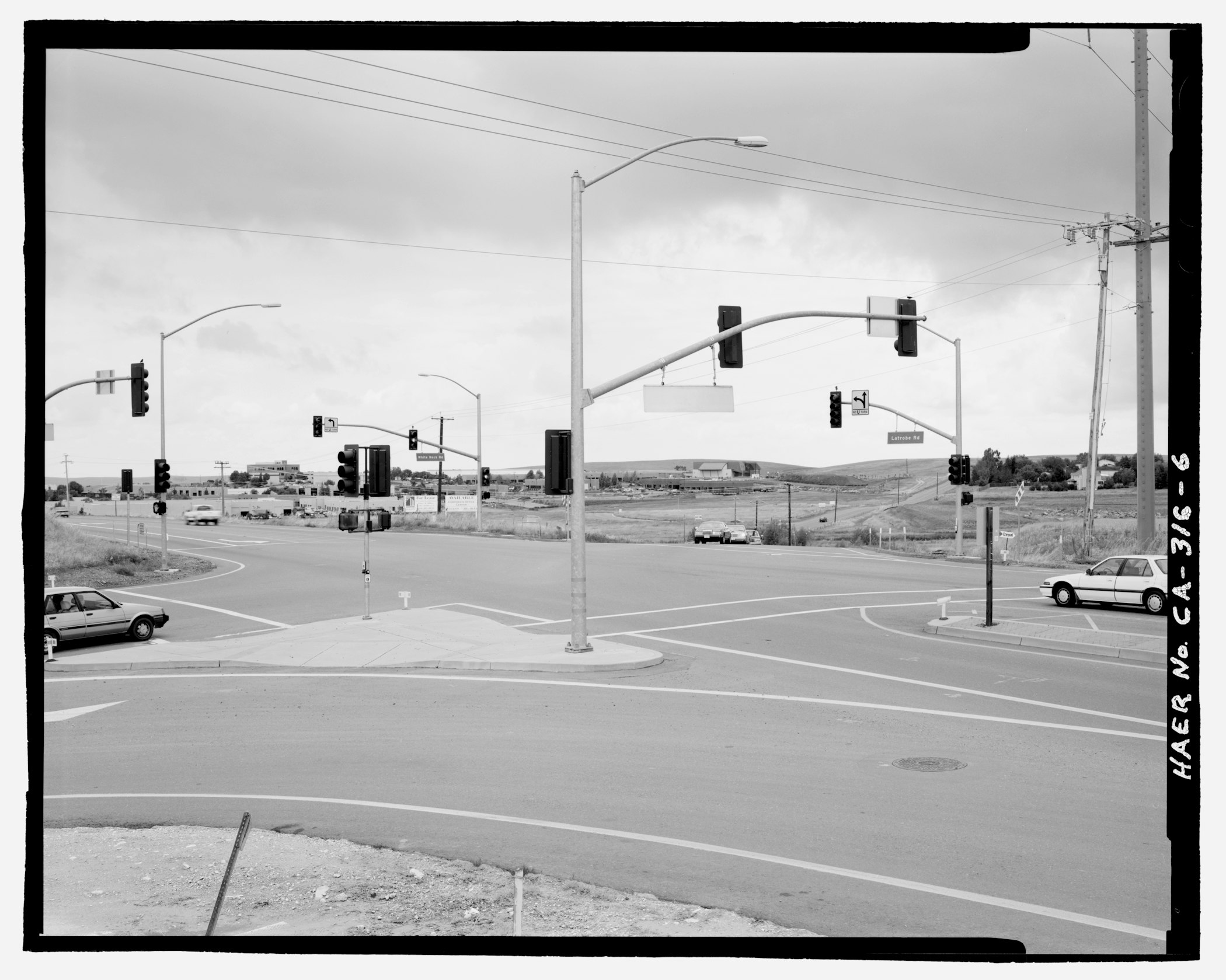Gradient’s Infrastructures issue started with a broad set of questions: how do architects engage with infrastructure? What new perspectives do they offer to interdisciplinary research that brings together the built environment with sociology, planning, and the humanities? And, finally, how can architects engage with historical and contemporary research on computation and artificial intelligence to rethink the place of architecture in infrastructure?
Our contributors brought together multifaceted discussions of infrastructures in different historical contexts, pressing political struggles, and speculated technological futures. The conversations that appeared in these pages spanned multiple timescales and geographies, from ancient Mesopotamia to our own state of Michigan. Our essay contributors examined the history of infrastructural projects as state-building political efforts, insights into digital infrastructures through new directions in artificial intelligence, and the politics of housing and maintenance, all through the lens of infrastructure studies. Two interviews with designers and thought leaders shed light both on the social promise of architectural practice and the profession at large. These rich conversations make it clear—to study infrastructures we must embrace a new kind of language that describes what infrastructure is and is not, what it means to different human and beyond human communities, and how this language can expand conversations about infrastructure and its many promises.[1]
The concluding editorial essay is therefore a nod to Raymond Williams’ Keywords : A Vocabulary of Culture and Society from 1976[2]. In trying to understand the many meanings of the words culture and society, Williams developed what he called a “shared body of words.” The list of terms, which ranged from aesthetic to work, were “significant, binding words in certain activities and their interpretation; and they are significant, binding words in certain forms of thought.”[3] In other words, the meaning of words is either well-known and agreed upon, related to context and to other words, or both. Williams clusters the words with other related terms to grasp their broader meaning. He concludes that words, much as people, emerge not from isolation, but from shared meanings and contexts.
Keywords for infrastructure is an especially poignant approach for framing our conversations about infrastructure at large. After all, much like words connect different types of concepts and meanings, infrastructures connect one point to another, one technology to another, one community to another.[4] Our keywords for infrastructure are therefore intended to be both a functional and a reflective document, to be used in other texts, classrooms, workshops, and other academic and nonacademic settings specifically related to architectural history, theory, and practice. Identifying a list of keywords for infrastructure encourages us to relate the contributions and tease our links, evolutions, and disconnects. While this is not intended to be a complete or exhaustive list, it nevertheless begins to define a shared language of Gradient contributors that moves work on infrastructure forward.
ACCESS: matters just as much as efficiency. The question "whose infrastructures?" has remained in the forefront throughout these essays. For as Robert Fishman observes, access to infrastructure deserves to be a basic human right. Yet in a cultural sense, access depends not only on physical availability and reach but also usability and understanding. Whereas physical connections can be provided by public works that nominally are everyone's, actual socialization of use arise from specific sites, situations, and practices. Because access is socially conditioned too, that often means design considerations for visible, knowable, enjoyable use can affect who actually uses an infrastructure. So a better answer to "whose" might be: "those who use it, habitually, with appreciation of a greater good."
BUILDERS: big engineering outfits often control the conversation. This is understandable because the largest and certainly most immediate infrastructure costs are construction costs. Say "infrastructure" and many people can imagine hardhat workers pouring concrete–or maybe some tech bros writing server stacks. This construction worldview makes it too easy to approach infrastructures as "solutions" to engineering problems. That has made it too easy for everyone else to leave it to the engineers, and the economists and legislators who finance them. But now the costs of such neglect are mounting, whether in mobility, energy, food, water, waste, or these days especially in housing (as Lee Vinsel argues). Thus the social complexities, cultural priorities, and local policies that help create and especially help appreciate infrastructures now seek their place at the table.
COUNTER-MAPPING: is a process of creating maps that explicitly challenge a widely accepted or dominant narrative of a place or condition. This practice is often embraced by geographers, anthropologists, and marginalized groups to assert their unique and often undermined relation to place, land, and natural resources. Because architects’ voices on infrastructural thinking so often must uphold the spatial contexts, scale, and omissions or collateral damage of infrastructure projects, practices of mapping become ever more important. Since in some ways geographic information systems (GIS) have become public soft infrastructures in themselves, and with considerable consequences in the sorting and separating of spaces, projects in critical GIS have new agency. Ersela Kripa and Stephen Mueller have demonstrated this in counter-mapping the need for shade in urban heat.
DIGITAL: an adjective commonly used today to describe technologies or situations involving or relating to computation. The term is often contrasted with words like analog or physical to distinguish how information is communicated, or to differentiate between embodied and electronically mediated experiences of the world. However, this belies the fact that digital infrastructures require a lot of physical space and matter in order to function, suggesting that computation is evermore embedded in (and inseparable from) the fabric of everyday life. If architects can develop tools and approaches for navigating digital-physical entanglements, like Ersela Kripa and Stephen Mueller’s data-driven installations, and Catherine Griffiths’ software interface, perhaps they could instigate more nuanced responses to bias and injustice existing within our environments.

Photo of broadband in Kutztown, PA, Library of Congress
HIGHWAY: perhaps one of the most frequently used terms to describe infrastructure is the highway. The term historically described a path, route, or road, implying a separation between the ground level and levels for travel. It was popularized during the Industrial Revolution, when the word came to describe the expanding scale of transportation by steam, carriages, and eventually, automobiles. Popular conversations about infrastructure often treat highways as a synonymous concept. But as Kathy Velikov and Geoffrey Thün, and Bryan Boyer show, highways have problematic histories that have divided or entirely disenfranchised communities, contributing to infrastructural racism. Architects and policymakers can mediate the effects of highway construction by creating hybrid community spaces or retrogressively eliminating highways altogether.

"Highways for Tomorrow", 1960s South Carolina Highway Department
HOUSING: the most basic definition of housing is human habitation, whose forms evolved over time to create safe, secure, and sustainable living space for people. Thanks in large part to the Industrial Revolution and resulting urbanization, housing now is a central issue of resource allocation. In the 18th and 19th centuries, people moved to cities to work in factories and mills, and employers and landlords determined minimum standards for living. These early urban forms of housing were unsanitary and insufficient, prompting multiple housing reforms over the 19th and 20th centuries. Postwar suburbanization was likewise a crucial point in housing history, which expanded residential space and decentralized urban resources and political power in the outskirts of cities. We now often encounter the term in relation to more negative words, like shortage, bust, emergency, and others. Lee Vinsel describes housing as one of the most crucial forms of social infrastructure, critical for making cities more affordable and equitable. Housing is therefore a fundamentally relational term that intersects with scores of other infrastructures, from highways and digital to legal and financial infrastructures that regulate who can build and where as well as who can buy, where, and for how much.
HUMAN RIGHTS: an ancient term rooted in legal and philosophical theories of equality from ancient Greece and Rome. It was later shaped by a slew of revolutionary documents, from the 1215 Magna Carta to the 1776 US Declaration of Independence. In the 20th century, the United Nations formulated the meaning of human rights as “the basic rights and freedoms to which all individuals are entitled, regardless of their nationality, race, religion, gender, or any other status. Human rights are considered inherent to all human beings and are essential for their dignity, well-being, and development. They include civil, political, economic, social, and cultural rights.” Added to this list, is infrastructure. Although infrastructure rarely makes an appearance in treaties and agreements, Robert Fishman argues that access to social and physical infrastructures, from water and housing to the Internet, is a fundamental right that ensures dignity, equity, and justice for every person.
HYBRID: infrastructures regularly combine multiple types of entities, from physical and digital systems to social practices, cultural norms, and institutional and governmental structures in order to serve multiple and unanticipated purposes. Hybridity is a critical factor of infrastructure because it allows systems to respond to the needs of particular communities, environments, and places. Increasingly, infrastructures must also interoperate. Kathy Velikov and Geoffrey Thün explore this within the dense complexities of New York. Ersela Kripa and Stephen Mueller explore this in how material practices can identify and locate new kinds of networks.
MAINTENANCE: the term describes not an object, but a continuous practice of extending the lifespan or usability of a system, object, function, or another domain. Maintenance is also a critical issue in infrastructure studies, specifically related to repairing aging roads, bridges, and housing in US cities. Infrastructure and maintenance also share some key issues, including the core definition of infrastructure as something that is invisible until it breaks down. Following this, Cyrus Peñarroyo’s essay brings visibility to some of the people (specifically lineworkers) responsible for fixing infrastructural breakdowns in order to open up a discussion about intimacy. Lee Vinsel further highlights that the maintenance of physical aspects of our environments also translates to the maintenance of social contexts, particularly providing affordable housing in the context of economic downturns, pandemics, social protest, and climate change. Other scholars have also discussed ways that as digital infrastructures are understood to be immaterial and invisible, it is exceedingly critical to locate acts of maintenance and care of virtual networks.

Historic image of railway construction workers, Library of Congress
POLICY: through much of initial building in the 20th century here in North America, infrastructures were left to expert engineers, economists, and policy analysts. As Robert Fishman's essay unpacks, infrastructures could be public works within a market economy. Starting in the 1980s, however, decentralization and deregulation gained favor, and policy was increasingly regarded as burdensome restraint. Today, as the non-fiscal costs of such negligence can no longer be denied, policy needs a new era: faster, legible to more people, hence participatory, and better able to put a value on upkeep and resilience. To understand the necessity of policy, there is nothing like the work of infrastructure.
SALIENCE: introduced by infrastructure scholar Thomas P. Hughes, the term describes large infrastructural works that are first known by the contexts of their most prominent innovations, but later, once more widespread, universal, and disappearing into everyday life, they are eventually more visible in their omissions. There is more to this than the people and places not connected. For as Catherine Griffiths points out, there are also the social practices not modeled.
SOCIAL/PHYSICAL: today, when almost any agenda might seek social justice and in doing so expose built-in structures of regrettable power relations, it is important not to conflate too much. Not every persistent social configuration is an infrastructure. No one physical infrastructure can bear the most blame nor become the one best improvement. Bryan Boyer describes social and physical infrastructures as two sides of the same coin—social and technical considerations forever reconstruct one another. Neither can always come first. Not everything is a social construct; not everything is technologically determined; not everything resides in material practices on the ground; not everything can be governed by distant digital overlords. This means that designers must look at particular communities of practice, and at how those do or do not adopt and benefit from physical infrastructures.

Photo of food distribution program in Houston, TX during COVID, Library of Congress
TECHNOLOGY: infrastructure is something built—which of course interests architects. It might not be built of concrete, however, and might even be built of data. Many kinds of infrastructure create a network, by means of operating one or more systems. As a means of knowledge, stability, dynamics, and ownership, a system of course interests engineers and investors. Yet "the" system does not exist; instead everyone operates in a world of systems, only partly interoperable, and loosely joined. Malcolm McCullough's essay has gone looking for infrastructures, networks, and what is by now two centuries of cultural favor toward epistemologies of system.
USABILITY: if the great design advance of the 21st century has been the usability, appeal, convenience, and outright addictiveness of handheld digital technology, what does that say about better access, knowledge, and everyday use of large-scale physical infrastructures? What makes the city more knowable and more usable? How does better design of crossovers, access points, and usage data patterns reach a larger constituency? Most of the articles here find a way to hint at this.
VULNERABILITY: the term generally describes one’s susceptibility to physical or emotional harm. Populations deemed vulnerable are often subjected to the harmful practices of people in power who, among many things, limit access to infrastructure as a violent and exclusionary strategy. Vyta Pivo’s essay reiterates this point, and Robert Fishman, Ersela Kripa and Stephen Mueller, and Lee Vinsel mention various examples related to water management, air quality management, and housing, respectively. Kripa and Mueller also describe how their personal experiences with infrastructural problems (both now and when they were younger) enriches their work. As Cyrus Peñarroyo notes, infrastructure can be a conduit for intimacy, and acknowledging our shared vulnerabilities can open people up to different kinds of relationships, for these are the critical moments when another way of living seems possible.
WORK: infrastructure-building not only allocates huge amounts not only of material and finance but also of labor. And the enormous expense of work is not limited to a singular campaign, but rather layers upon layers of expended energy and resources. Work in the context of infrastructure therefore hints at the importance of time and of prior work. As Lee Vinsel shows, in order to plan for new sustainable infrastructures, we must understand that every infrastructure is always an accumulation of prior work and layers of investments. Infrastructure is never finished and is always in the making. Cyrus Peñarroyo also shows that infrastructural work highlights the intimacies and relations between laborers, humans, built environments, and non-human actors.
